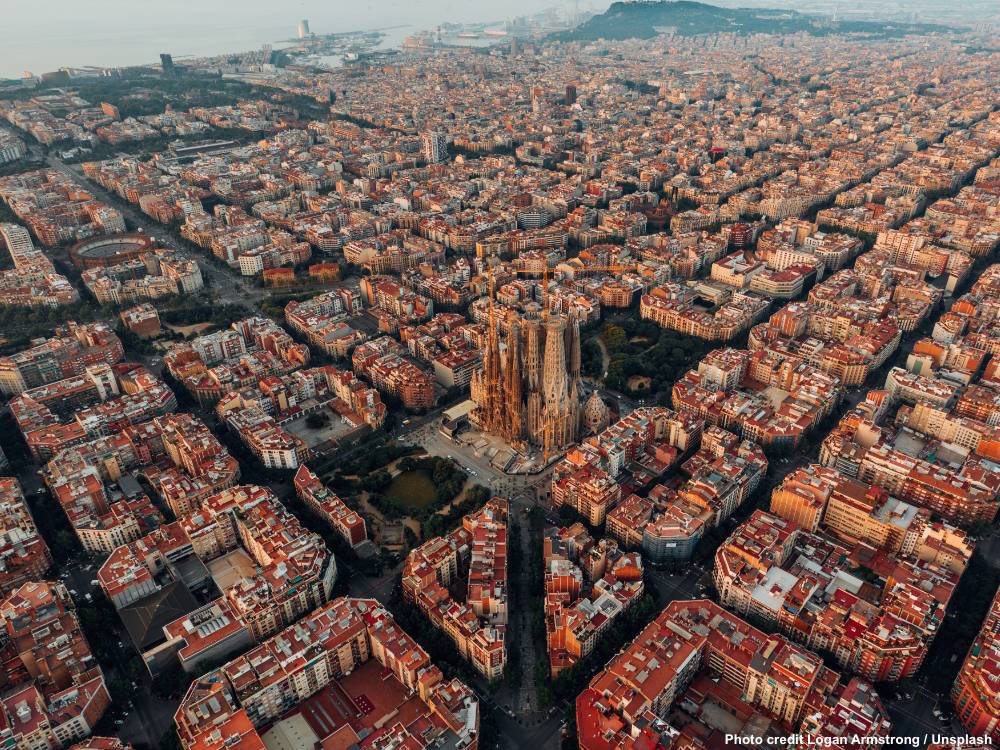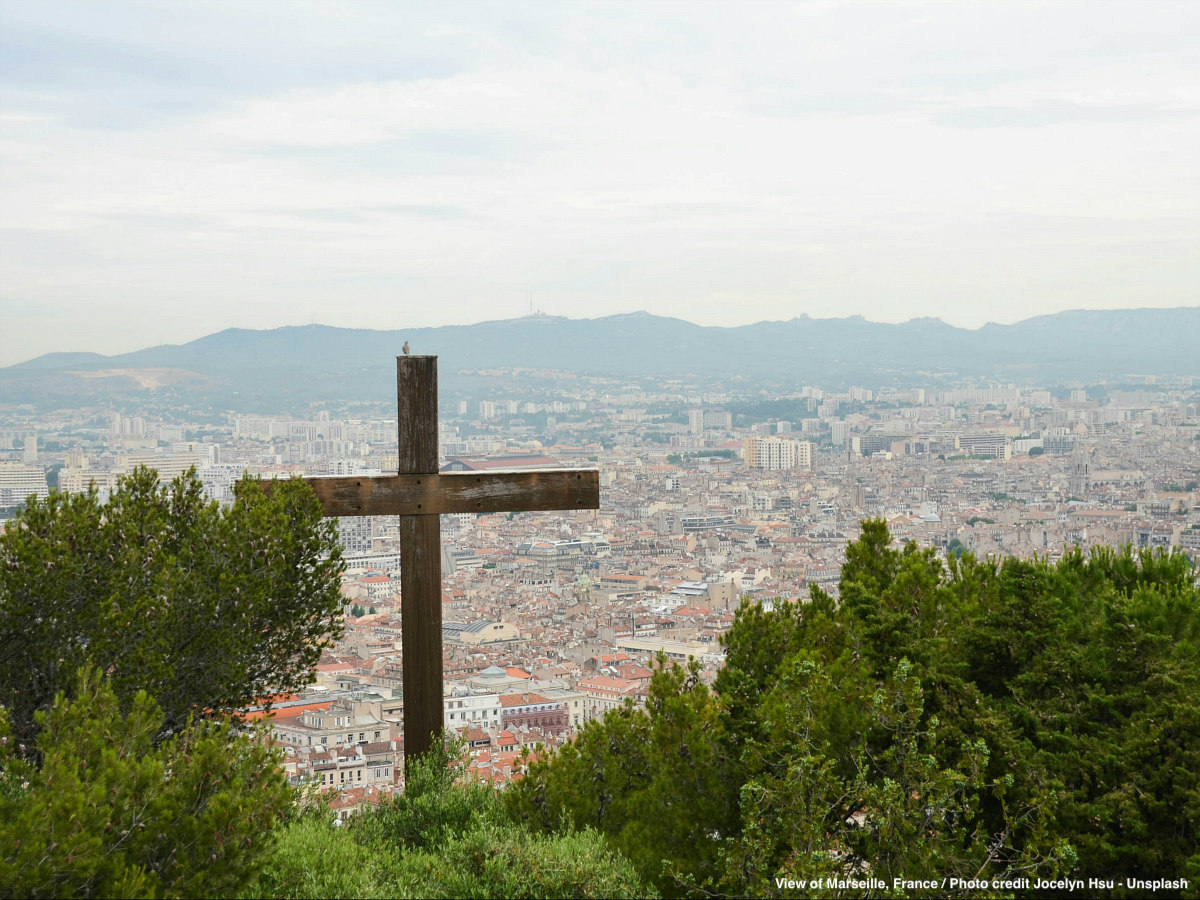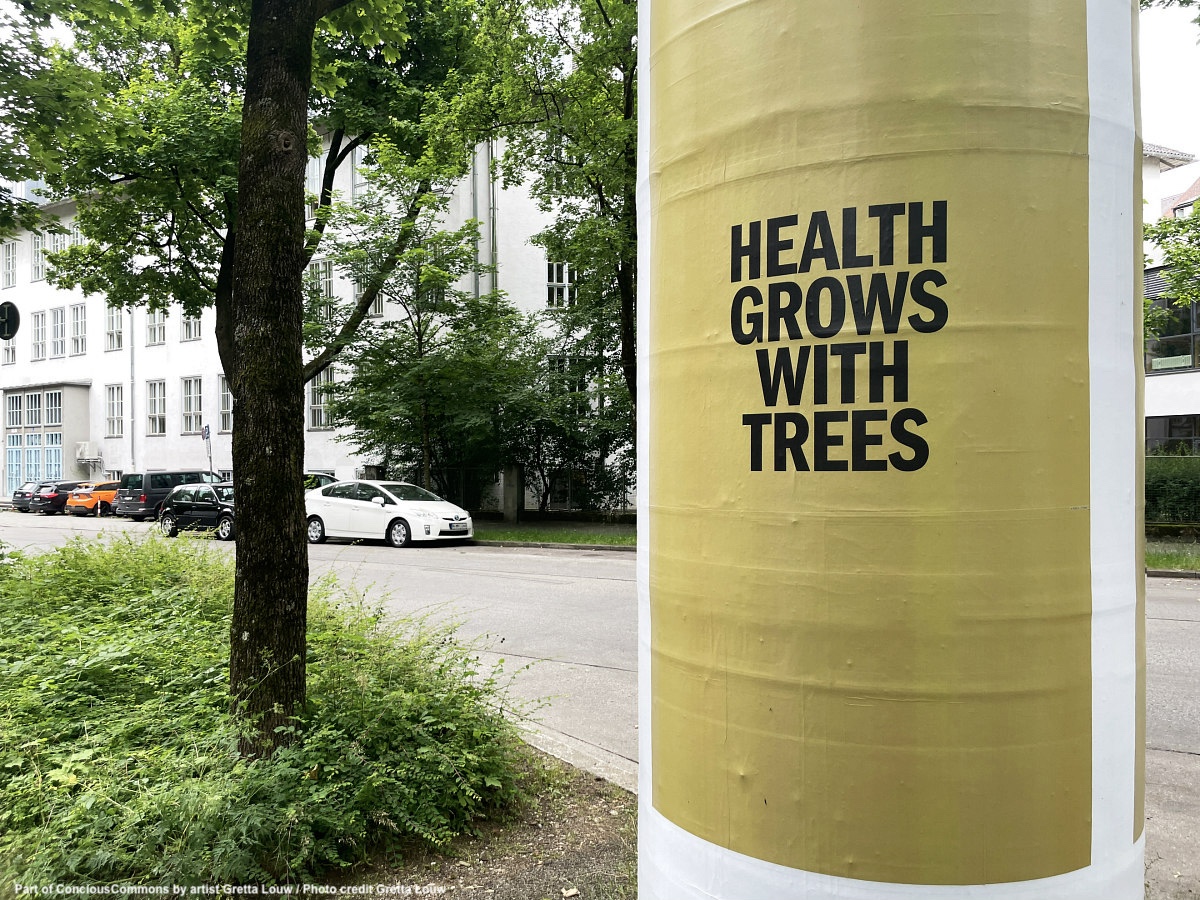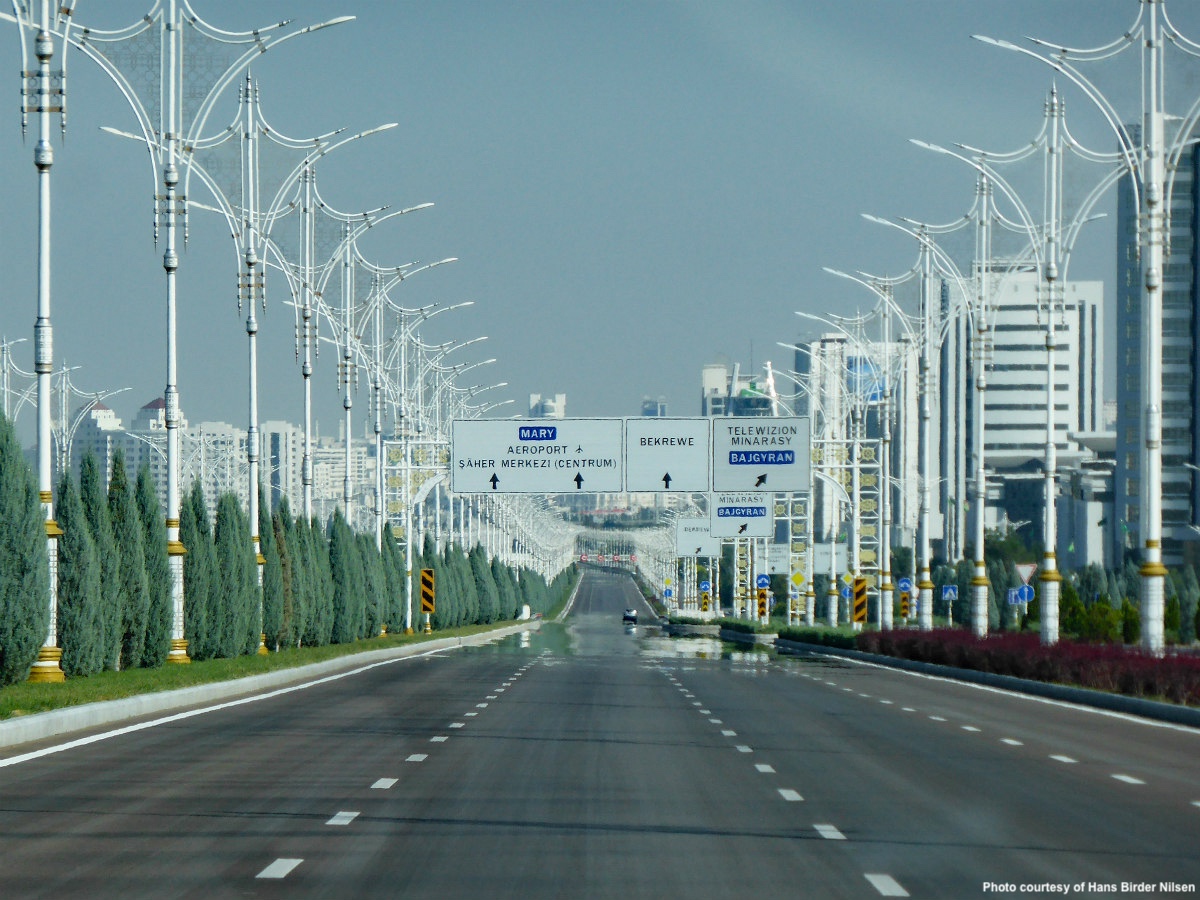Almost everyone would recognize Barcelona from the air with its central grid of blocks. The beautiful Eixample has attracted international attention among urban practitioners after the actual city government implemented the first of its superillas or superblocks in Barcelona in 2016. In November last year plans were announced to super-size the superblocks, turning Barcelona’s Eixample district and its entire central grid into a greener, walkable-friendly area with less traffic.
However, more and more residents in Barcelona, from academics and climate activists to discontent neighbours, have raised their critical voices towards this highly acclaimed project, which could be influential in cities around the world.
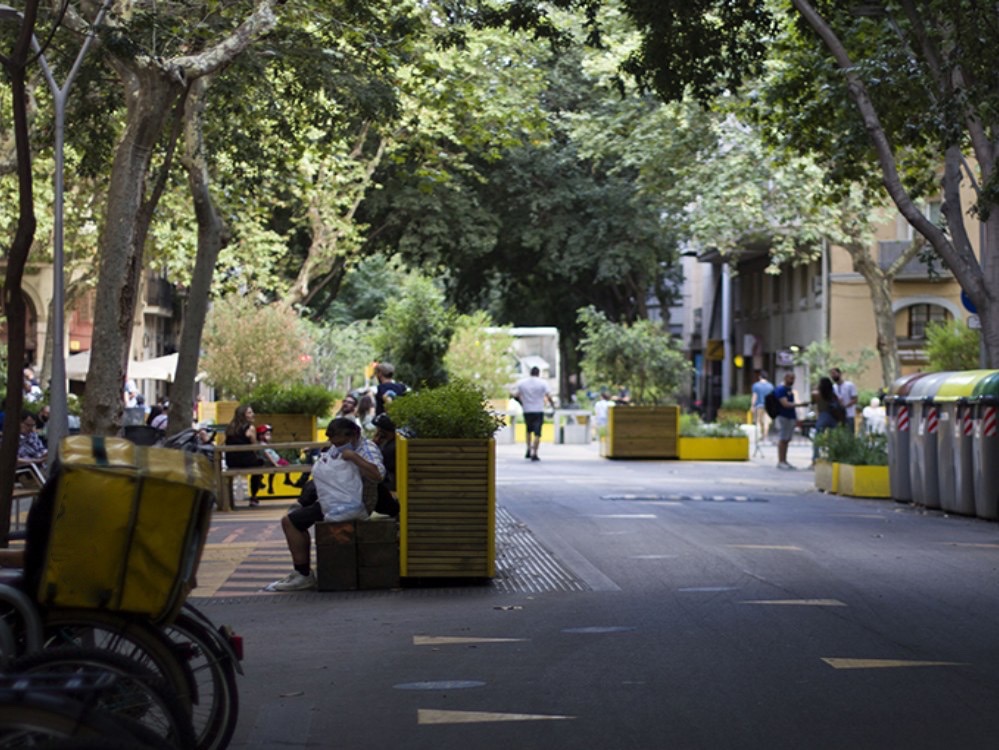
Yet intervening in Cerdà’s gem of urban planning is not exactly lightweight. The city Ildefons Cerdà once imagined, full of vegetation and open spaces, has little to do with the current car-clogged streets. Since then Barcelona has reached pollution levels which exceed the legal limits of the European Union. Today’s low quality air has its roots in a monoculture of the individual car and constitutes one of the most serious public health problems in the city.
Already in the 19th century Barcelona was an industrial city with a precarious public health derived from the consumption of fossil fuels in addition to the lack of sanitation infrastructures. This situation urged the creation of urban systems where water, electricity and quality air would transform the city into a liveable place. Cerdà, inspired by utopian socialism and hygienism, formulated at that time the Cerdà Plan (1859), one of the foundations of urbanism. The modern city rose with its back to ecological cycles and its own survival.
More than a century later Salvador Rueda’s superblocks were born in Barcelona. His initial project (1987) pursued livability through sustainable mobility and ecological improvement and conceived 503 superblocks, of which approximately ten have been partially implemented. Current plans by the city council to extend the superblocks to the entire Eixample, it draws a scheme of green hubs and squares where pedestrians have priority, far from being like the original superblock project.
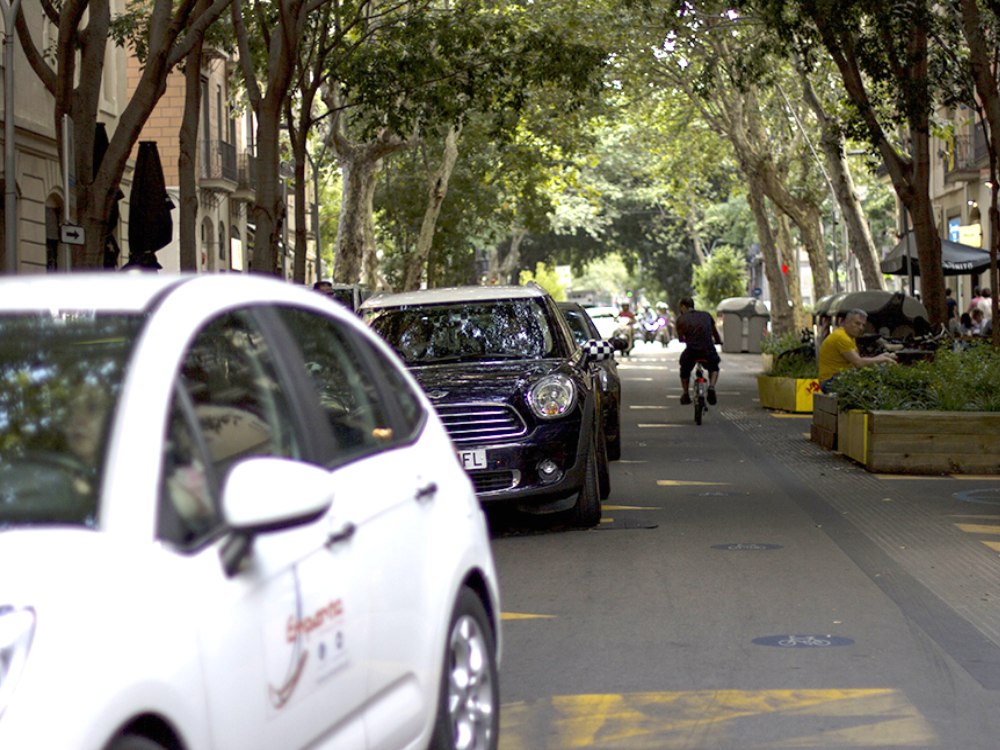
To that end, today’s superblocks have evoked highly polarized opinions with little positions in the middle ground because of the intense conflict of interest of two common urban battlefields: the role of the car and affordable housing. In addition to these multidimensional conflicts are the ecological and climate crisis. When taking into consideration the complex correlation of these urban realities, the superblocks in Barcelona end up showing significant flaws to achieve its goal in reducing traffic and air pollution in the city and allocate public space, not only more efficiently but more inclusively.
Olga Margalef is part of the Plataforma per la Qualitat de l’Aire, a social movement with a sound scientific basis fighting to improve the air quality in Barcelona. She believes that the plan is necessary but insufficient. It is necessary because it contributes to reclaiming streets for people but insufficient as a measure to reduce pollution and fight against the climate emergency with a lack of scientific rigor in the collection of evidence.
The superblocks are being implemented as a single event, but it needs to be a much more effective and drastic scale of implementation promoting a structural and coordinated plan in the Metropolitan Region of Barcelona, claims Margalef.
In Pontevedra (Spain), also a city where the eyes of international urbanists have been focused on, a similar proposal granting priority to pedestrians has been successfully implemented because plans were ambitious enough for a medium-sized city. However, a city of the size of Barcelona requires larger-scale measures to discourage car use. Margalef describes how it has been already proven in the rest of the large European cities that a fee for cars is the most effective measure to reduce air pollution. It is the inevitable way to comply with the legal limits of air quality in Barcelona.
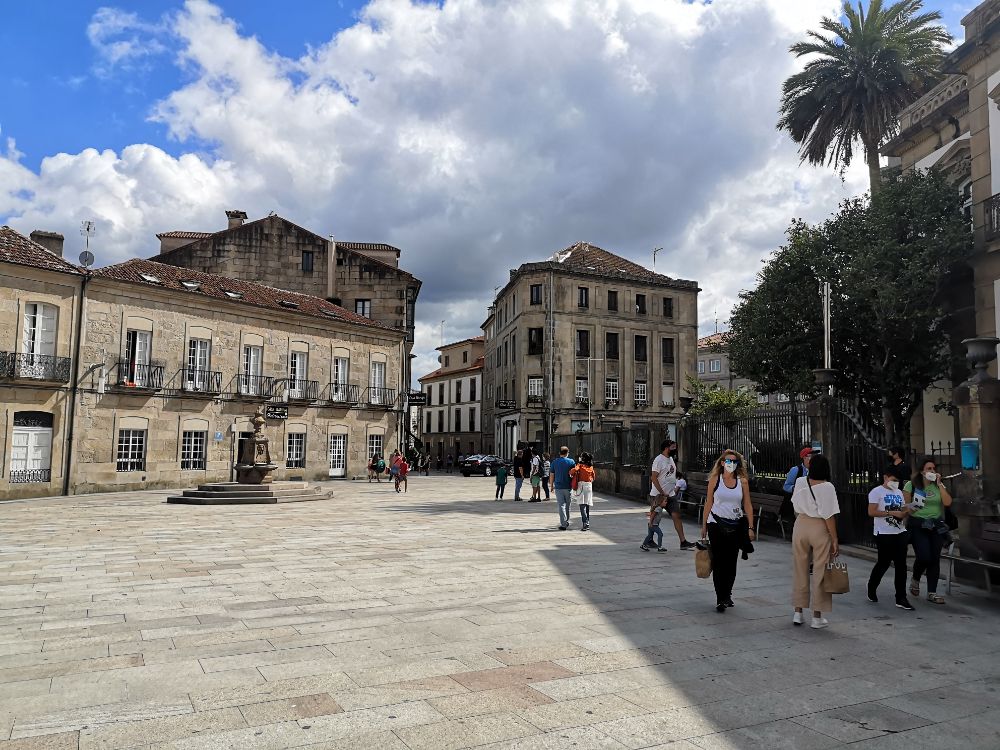
Among a long list of many effective measures proposed by the Plataforma per la Qualitat de l’Aire, Margalef and her group vindicate that any reduction or elimination of the automobile must be preceded by the reorganization of public transport. For instance, they propose measures like a new rate system for any means of public transport based on subscriptions of a social and intermodal nature so that it becomes a high-quality, affordable transport that covers the entire metropolitan area without creating – or increasing – social differences, and measures to contrast the gentrification phenomena.
“In the same manner gentrification can be counterproductive to address pollution because it displaces residents dependent on the private vehicle to the periphery increasing its usage to move around and, paradoxically, polluting more,” argues Margalef.
Air pollution, housing policy and the urban model cannot be understood as silos separated from each other. Any proposal which does not consider this intersection can’t aspire to success and it will be inevitably unfair.
Since the Olympic Games in 1992, Barcelona has undergone numerous gentrification processes, making the city one of the places with the greatest problems of evictions and access to affordable housing in Spain.

Isabelle Anguelovski is the director of the Barcelona Laboratory for Urban Environmental Justice and Sustainability and has been advocating for social equality which builds on the theory and methods of urban planning, public policy and environmental sociology.
According to one of her studies, together with other researchers, green gentrification is one of the major consequences which are already putting strains on the extreme situation of access to housing. They also conclude that these actions “can be obstructed not only out of fear of the material and political effects of the transformation measures, but also because of the message it conveys as concerns who is entitled to decide for the common good” […] Therefore, she indicates “brave politicians”, who take on struggles for authority in the short-term, are needed to achieve mid- to long-term transformational goals”.
What could have been very compelling policies in Barcelona determined to transform the streetscape for a more sustainable city, have ended up being beaten down and reduced to timid attempts masterfully packaged in political marketing.
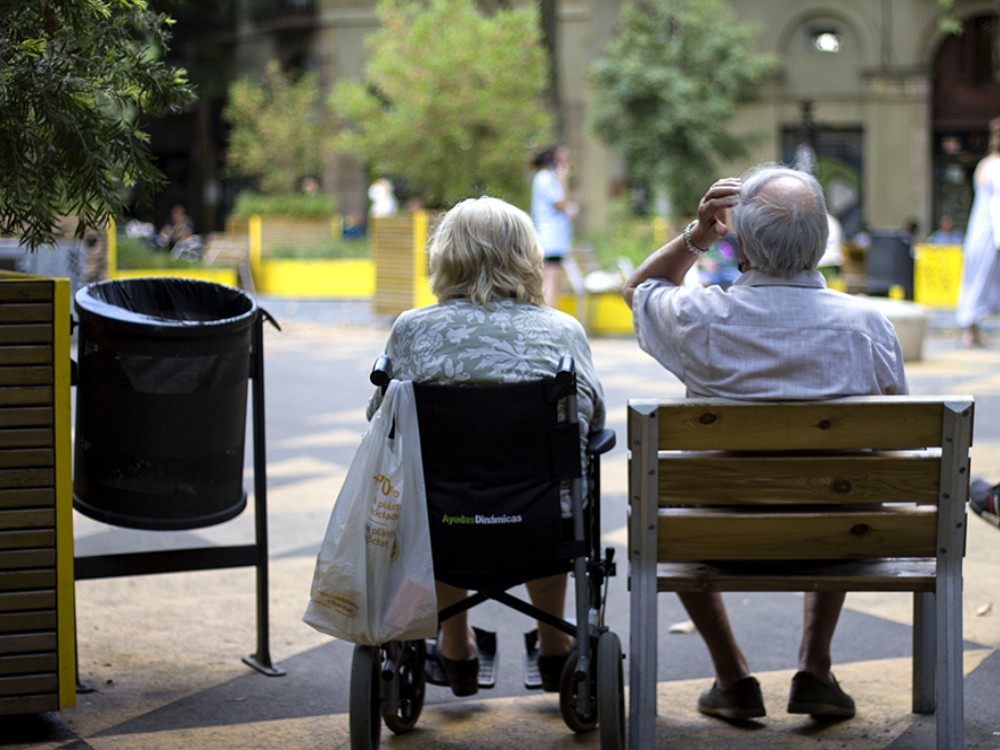
Although it seems that today’s Barcelona might have failed to follow Cerdà’s vision, in fact it was Cerdà and utopian socialism which fell into a moralizing and naive view of the social aspect of the city. He put a plan forward ignoring the urban political economy and the relations of production – understood as the relationships between human beings as actors of the process of “making the city”, in other words, the daily life – that underlay it. The current discourse of superblocks follows the same line.
The rhetoric of the superblocks in Barcelona responds to a moralizing formulation of the good citizen, aimed at the middle classes who easily buy into this proposition, explains José Mansilla.
Mansilla is an anthropologist specialized in urban issues, activist and member of the Observatori d’Antropologia del Conflicte Urbà. In addition, he adds that it falls into an unreal vision of how space, among other things, is built in the city. “It is a sign of the inability embodied by certain governments to tackle structural and essential urban transformations”.
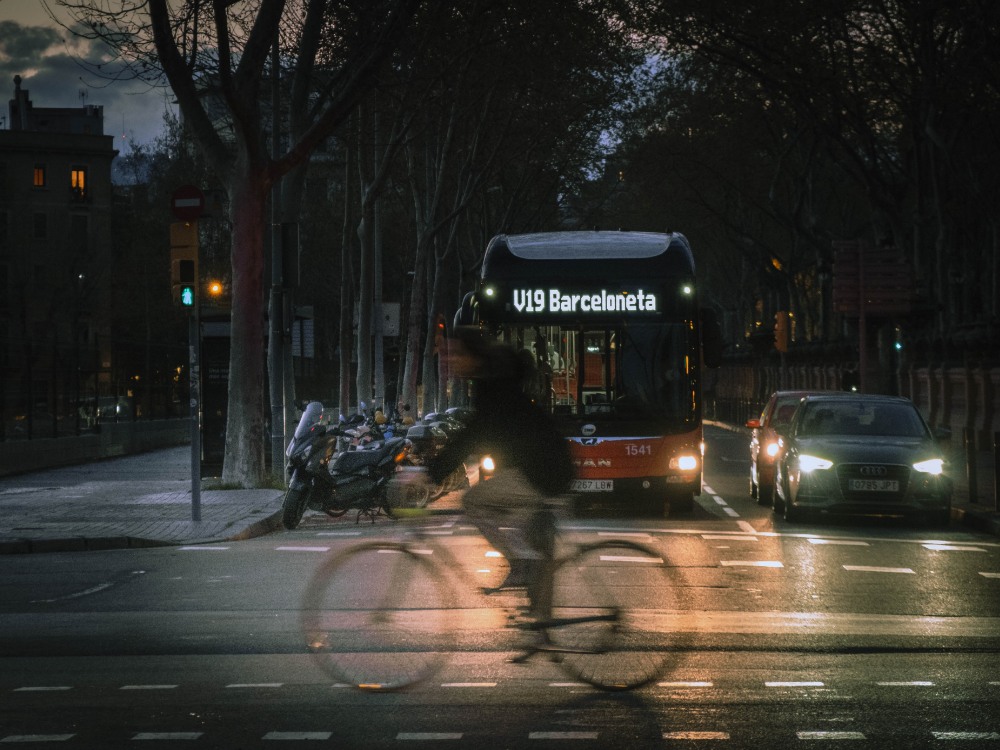
What was initially proposed as a project of great urban transformation by the municipal government – in the global context of a city with international investors and industries looking to address the threat of the ecological crisis through the agenda of green capitalism – it all ended up resulting in a giant greenwashing operation.
Precisely, the success of the usual fallacious and misleading speech by some sectors about “sustainability” and the improvement of the urban environment through green practices has its origin in the depoliticization of ecology. They are assumed as a matter of technical and purely technological skills in cities but it has little to do with people. As a result, this makes it easier for green gentrification to go unnoticed.
In fact the actual plans of the superblocks in Barcelona show a clear evidence of the real limits when it comes to implement ambitious and transformative projects of urban ecology which understand how human and ecological processes can coexist in cities and help societies with their efforts to become more sustainable, indispensable to fight the right to the city and climate justice.
Therefore, it makes perfect sense to insist on environmental justice in cities as a central cornerstone in the political and urban struggle of the 21st century.
